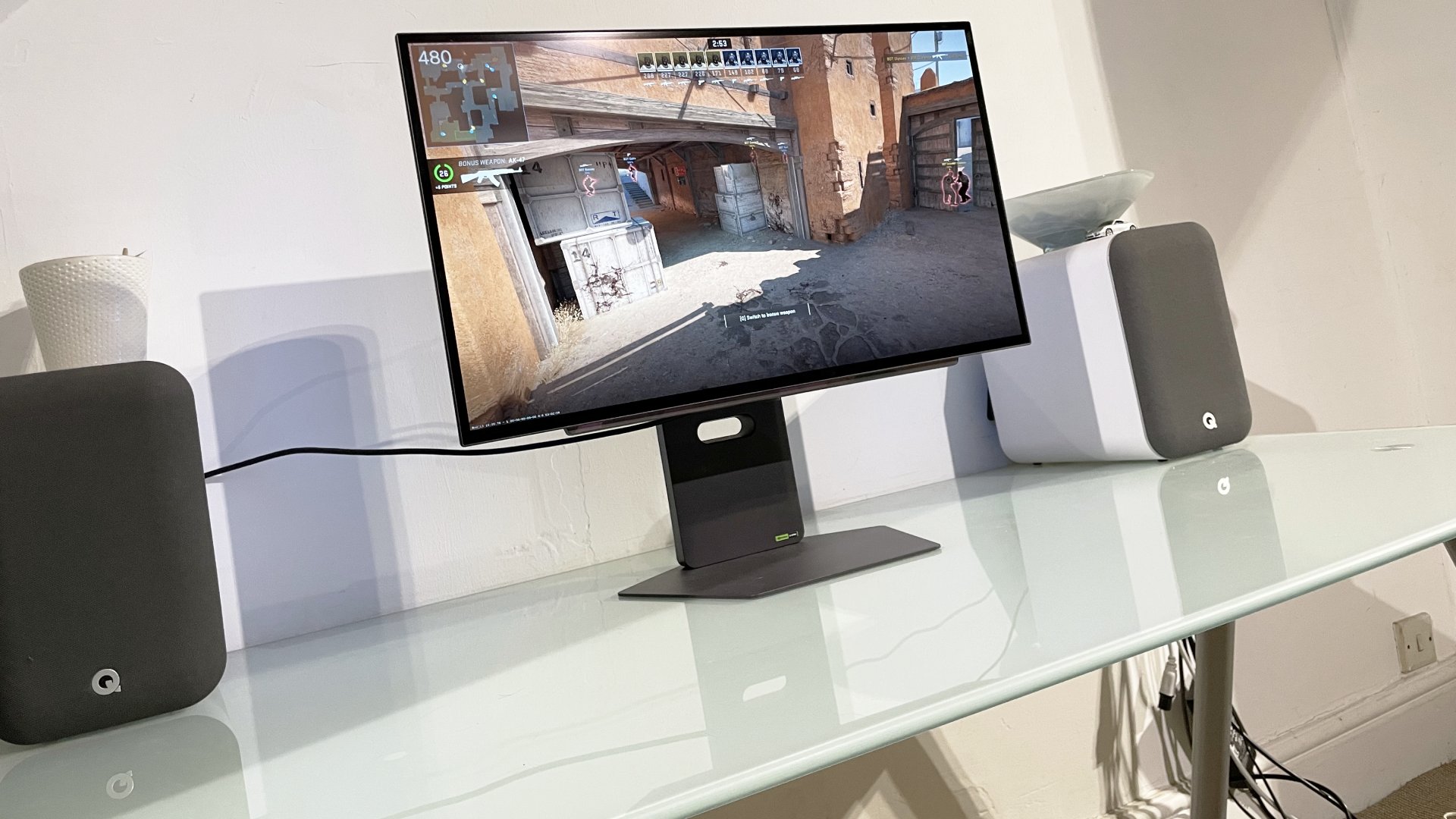Our Verdict
Beautiful design, top-tier internal hardware (albeit with an aging CPU), but with a particularly low TGP on the RTX 5060, it absolutely hammers the frame-rates down to the point you end up questioning whether it's a 5050 in disguise.
For
- Idyllic design language throughout
- Almost perfect internal specs
- Just okay 1200p performance
Against
- 85W TGP is a real blow to the RTX 5060's performance
- 32 GB RAM SKU is limited to the US
PC Gamer's got your back
A tale of two laptops, this little article of mine is. Or perhaps I should say a tale of two GPUs instead. Recently, I had the luxury of reviewing Lenovo's LOQ 15 Gen10 RTX 5060 gaming notebook, and to be honest, it left quite an impression. Although not the best gaming laptop in every aspect, its performance for the money is outstanding, and when paired with a crisp 15.6-inch IPS panel, it thankfully delivers an exceptional gaming experience no matter what I chuck at it. Even in spite of its weird and not-wonderful SSD and RAM combo.
When the Gigabyte Gaming A16 landed on my desk not long after, complete with that same RTX 5060 and a similar 1920 x 1200 IPS display, I was hopeful that perhaps the foibles Lenovo had introduced in its own model could be remedied by a brand with a bit more sensibility. A bit more gaming panache, let's say.
And that's the key thing here. The Gigabyte A16 and the Lenovo Gen10 are both priced at around $1,300 or thereabouts (there's some confusion on the British front, but I'll talk about that in a bit). Both feature damn near close enough the same form factor, and both are targeting the same budget-centric audience as well, and come with remarkably similar hardware underneath. On the surface, this should be a close fight, but I promise you it's nothing of the sort.
The problem is the relative TGP, or total graphics power, of the two GPUs at the heart of the laptops in question. In short, Gigabyte, for some reason, has decided the A16 should tap out entirely at 85W, no matter what graphics card you stick in the config box. RTX 5050… 85W, 5060… 85W, 5070… you get the picture.
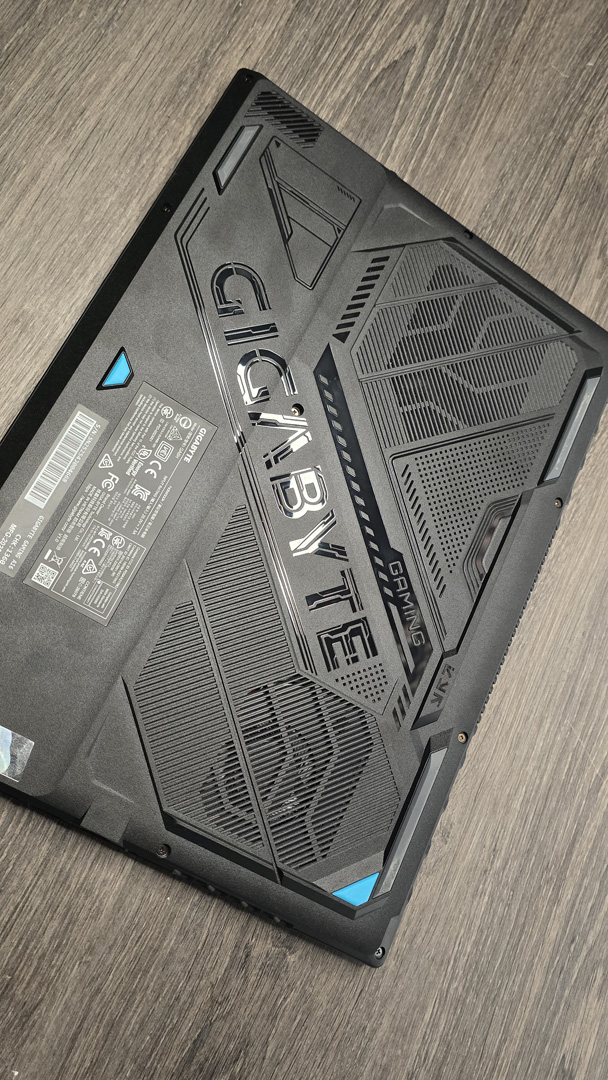
Model No: CVHI3US864SH
CPU: Intel Core i7 13620H
GPU: Nvidia RTX 5060 85W
RAM: 32 GB DDR5-5200
Storage: 1 TB PCIe 4.0 SSD
Screen Size: 16-inch IPS
Refresh Rate: 165 Hz
Resolution: 1920x1200
Battery: 76 Whr
Dimensions: 16 ~ 22.9mm x 358.3mm x 262.5mm | 0.90 x 14.11 x 10.33 inches
Weight: 2.2 kg | 4.85 lbs
Price: $1,227 | £1,100
The problem is because of that the card just can't hold high enough clock speeds for long enough to make a dent compared to its competition. It's already relatively hamstrung by being a mobile variant, and losing a good 15% of its CUDA cores in comparison to its desktop counterpart, and now it's having to compete with the likes of Lenovo's LOQ 15, Erazer's Deputy 15 P1, and Asus's TUF A14, all of which feature a TGP well into the 100+ range and above. And it is telling, let me be clear about that.
I'm going to type in a number now, and it's not going to look that bad at first glance. The difference is around 14% or so in terms of a real-world performance drop. That's compared to the Gen10 across all the titles I tested in the standard graphical presets with no upscaling. In some of those games, that's anywhere between 5-15 fps at 1080p, all of them floating anywhere between 30-60 fps on average.
Throw any form of upscaling or frame-gen into the mix though, you know that juicy DLSS 4 goodness the RTX 50-series is all about, where frame rates bounce even higher into the low 100s, and the worst I saw was a difference of nearly 40 fps between the two (looking at you F1 24), you know between two similar RTX 5060 laptops, priced accordingly, advertised similarly…
Keep up to date with the most important stories and the best deals, as picked by the PC Gamer team.
There's also some bizarre stuff going on with internal hardware reporting here, too. Even with the latest drivers installed, both HWInfo and Nvidia FrameView detected numerous errors with that GPU. I'd often see reports of 4,000 MHz clockspeeds (it's not the CPU, I did check), or temps registering at 0 degrees for prolonged periods of time.
Particularly awkward given what GiMate is meant to be doing in the background, optimizing power delivery and fan profiles.
That's seriously frustrating, because on the whole, the rest of the spec list here is pretty damn impressive. Unlike the Gen10, there's dual-channel memory outfitted across the whole range, including the entry-level model I have here. That's 32 GB if you're in the US, and 16 GB in the UK (with a subsequent £200 price drop to match). That's then backed up with a chonky 1 TB PCIe 4.0 SSD as well; one of Gigabyte's own TLC powered Aorus 5000E models, which is a pretty swift 6 GB/s drive. That combo is far superior to the middling single-channel RAM and 512 GB SSD found inside the Lenovo LOQ.
The CPU does leave a little to be desired, admittedly, as it's one of 2023's finest, Intel Core i7 13260H editions, and it does struggle to keep up with the newer Ultra line and Ryzen models, but honestly, the overall package is solid, and I can't particularly criticize it. General CPU and system performance was actually quite decent, with single-core particularly shining through, despite the two-year age gap between it and more modern Ryzen chips.
It's gotta be for the battery then, right, that lower TGP? Surely that's the important thing I'm overlooking? And you'd be right to say that. The A16 has a hefty old unit inside, 76 WHrs to be precise, and lasts 183 minutes in PC Mark's gaming benchmark. Helped in no small part thanks to that magical AI gubbins Gigabyte has thrown into its GiMate suite. The thing is, though, I'd rather sacrifice that battery life if I'm honest. 99% of the time, you're going to be gaming on this thing with it plugged into a wall anyway, so why sacrifice those frames for an extra hour or two of stuttering frame-rates instead?
Still, for the money, for what you're getting, if you ignore the arguably egregious faux pas that is, reduced fps from a saggy graphics card TGP, the Gaming A16 is a beautiful thing.
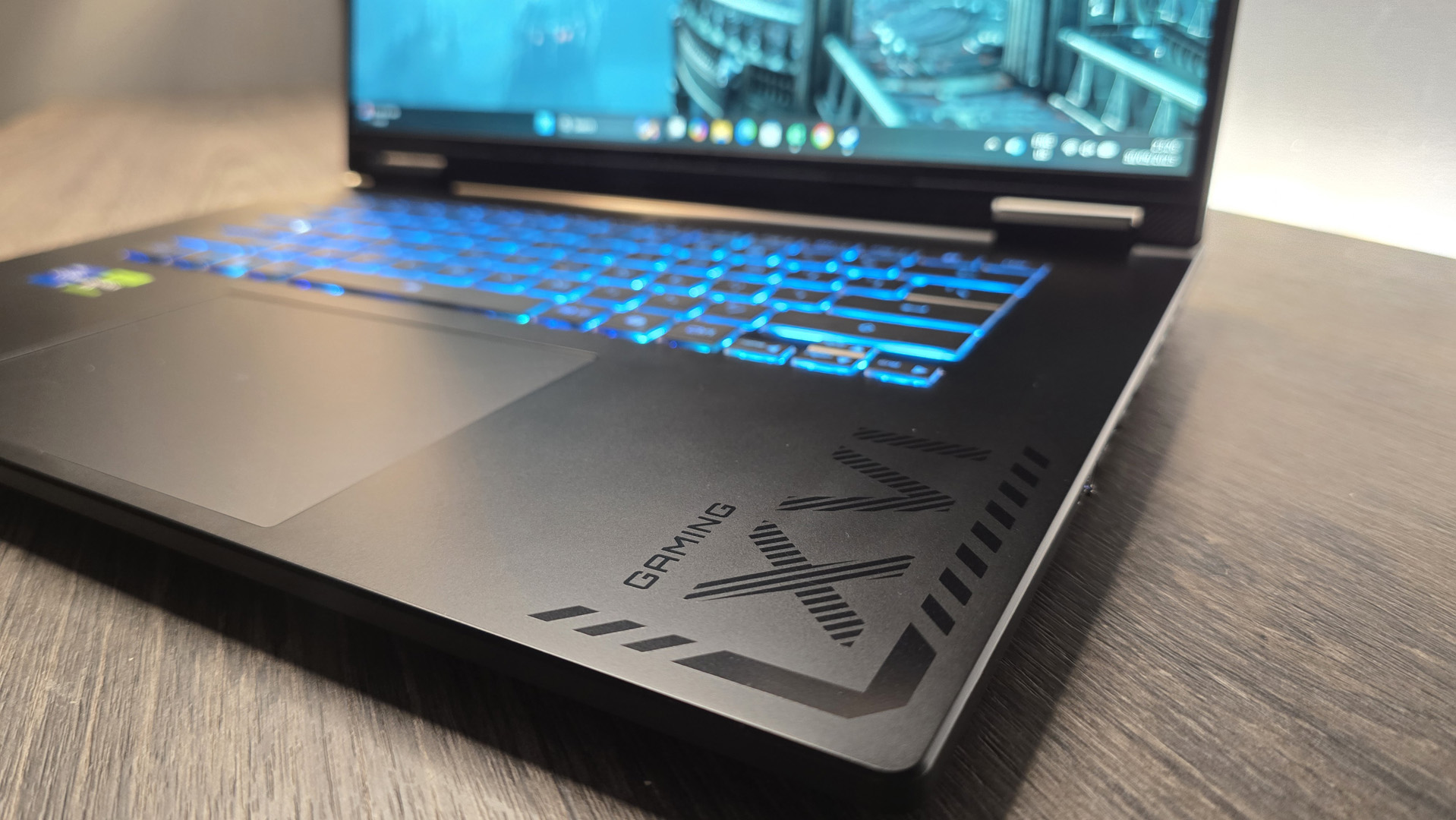
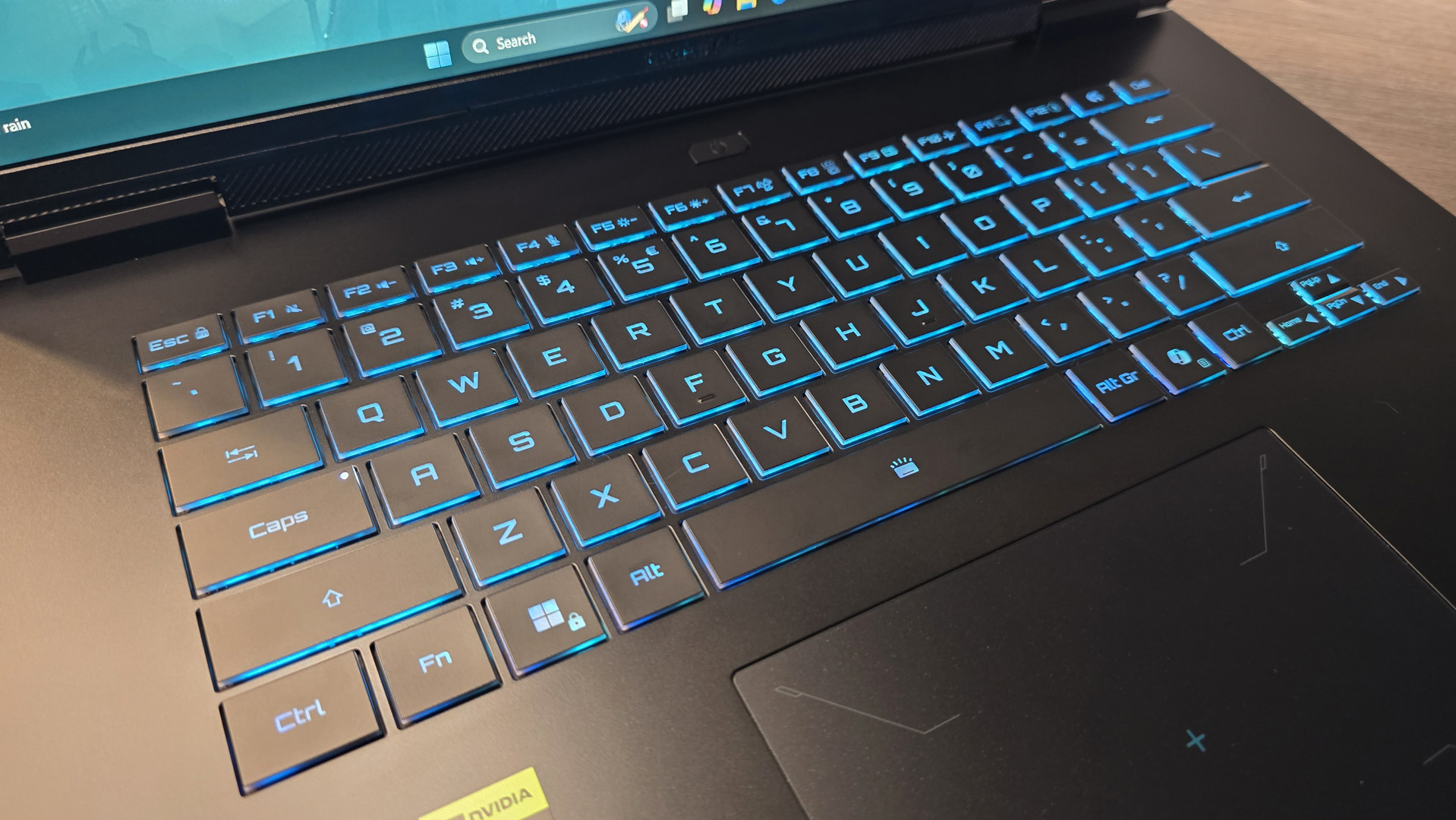
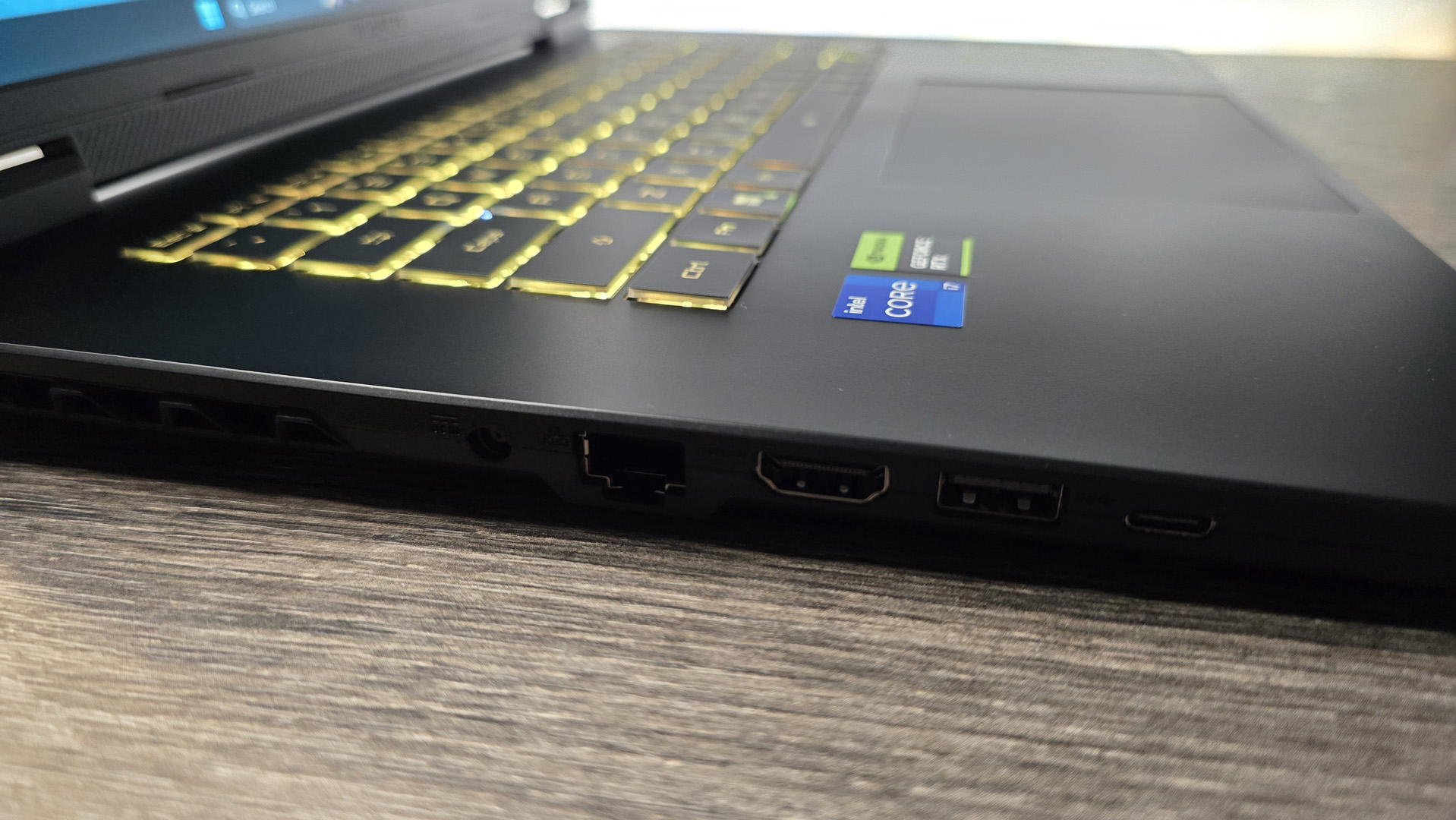
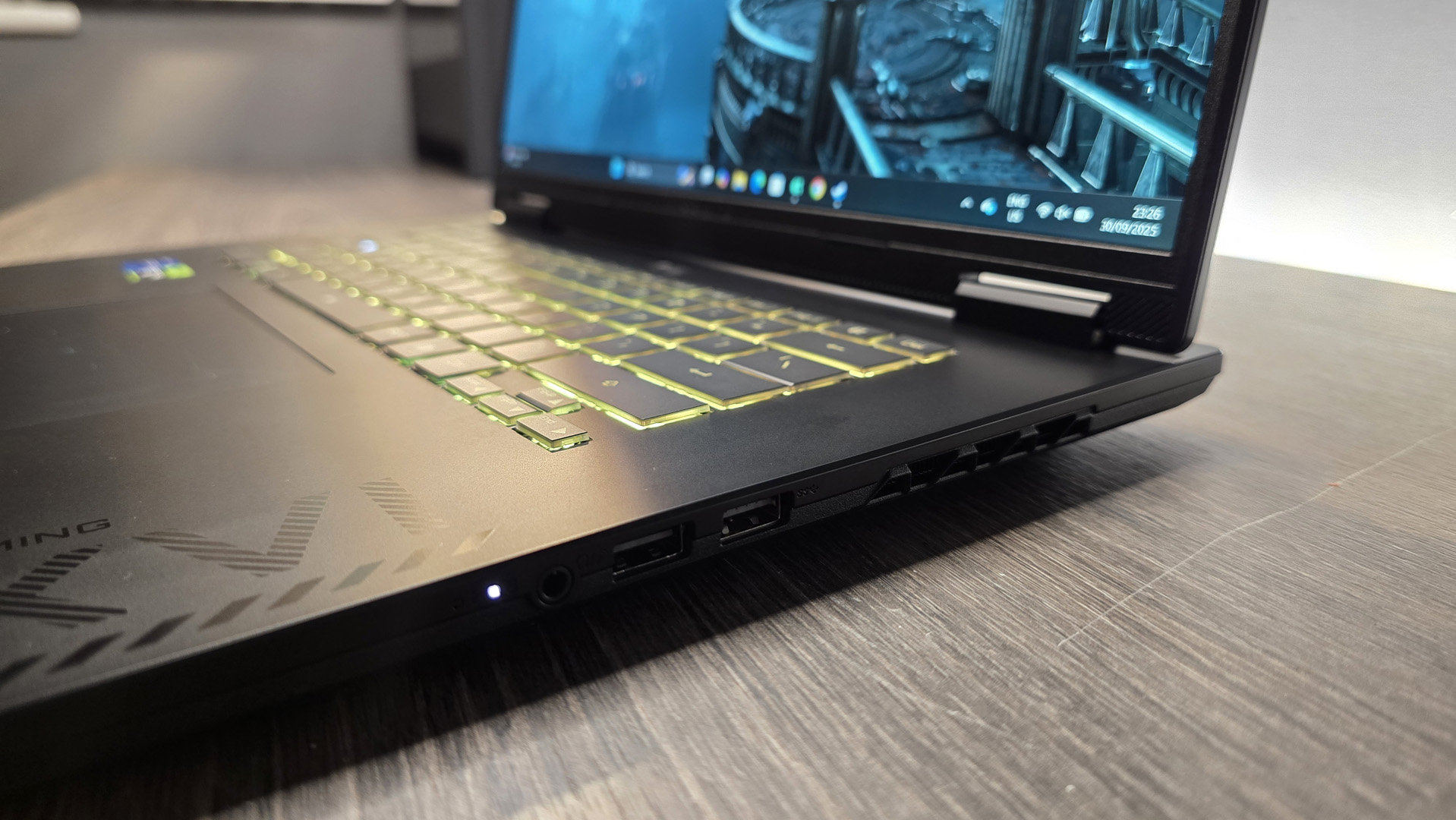
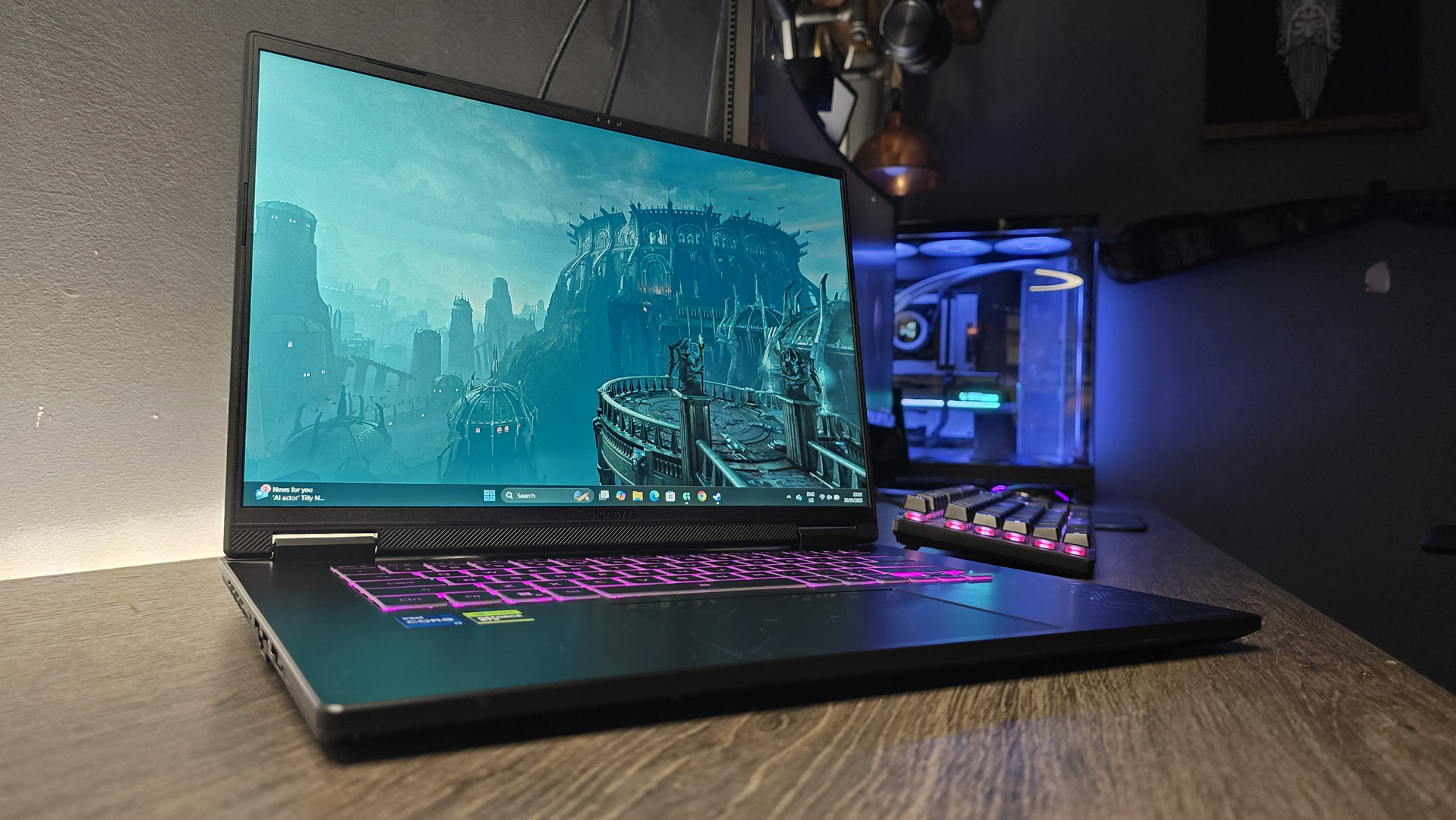
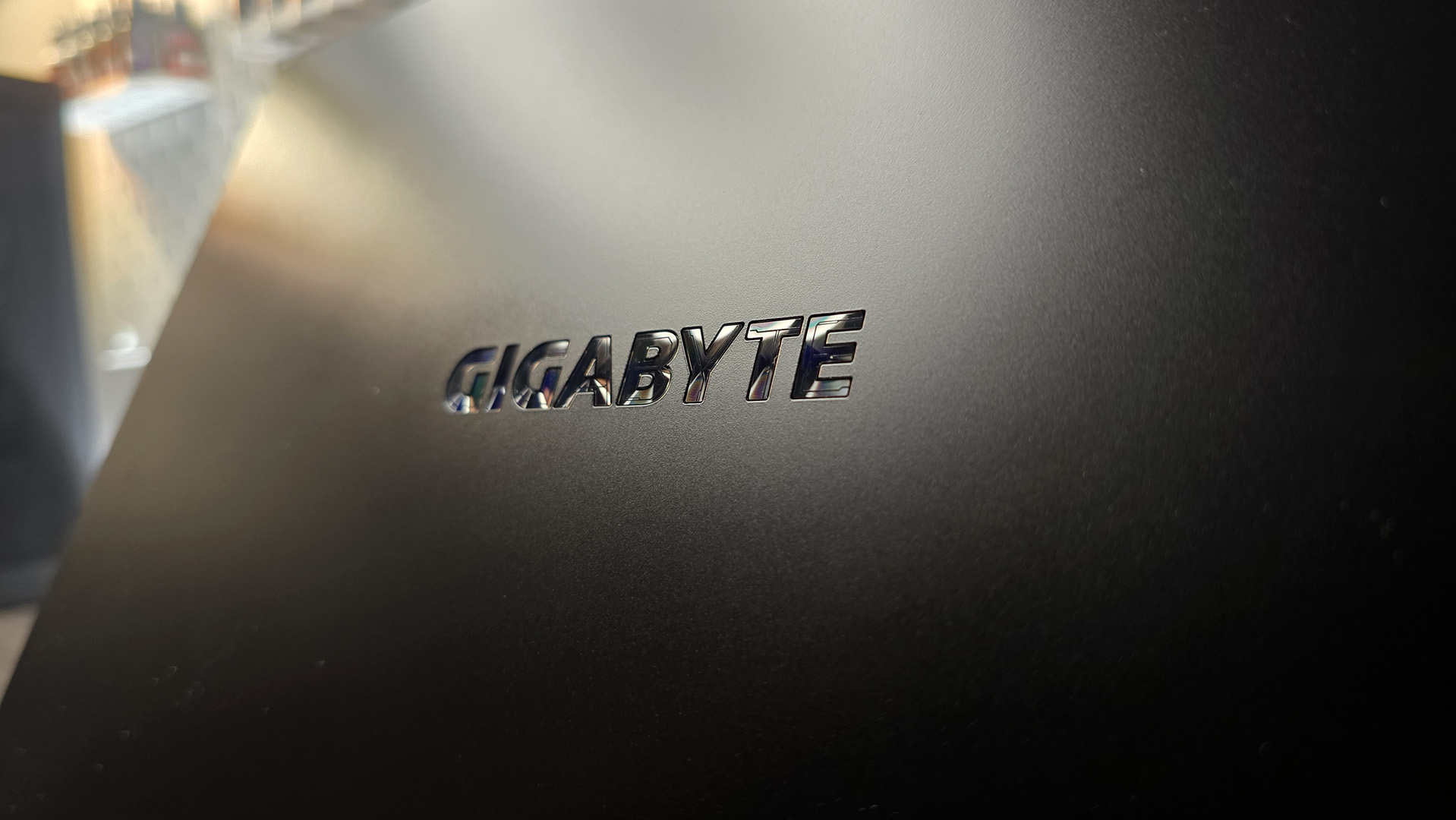
It has this stealth-like aura that oozes personality. Business casual, if I were to sum it up in two words. There's no protruding divots, or webcam slots, no gross RGB logos, or big bulky form-factors here, just a super-elegant, sleek device that looks just as at home in your 9:15 am Monday SEO strategy and alignment call as it does raiding Siege of Orgrimmar on a Friday night. Bezels are thin, the RGB keyboard does its job nicely, there's a webcam there for your more face-faring moments, and connectivity abounds, including dedicated Ethernet, WiFi 6E, and Bluetooth 5.2 as well, all wrapped up in a nice little package.
✅ Gaming is a secondary thought: If you don't mind slightly lower performance and prefer longer battery life, it's a sure-fire pick for those looking for something that balances gaming with office work.
❌ You're annoyed that Gigabyte set the TGP so low: It's a running theme, but 40 fps drop in some games is no joke for an identical card. If you want a better RTX 5060 laptop, there are a few out there already.
I mentioned GiMate earlier, and it's worth bringing up because it is arguably one of the best equipped AI suites I've seen on a laptop to date. It of course still promises the world, local LLMs that kind of work, auto-overclocking solutions, fan profiles that adapt to your surroundings somehow, equalizer tweaks, privacy mode that spots people pop up on your shoulder, (admittedly some of that stuff we've had for years now technically, just without an AI badge). But generally, it's very smooth and operates well with the help of some Microsoft assistance.
Is it game-changing? Not really, you will forget about it in about 2 weeks, but it's nice to see it being applied in a bit of a more thought-out manner than in previous iterations.
So then, best gaming laptop of 2025? No, sadly not. The A16 is certainly not that. The positives are there, yes: the build quality, the RAM and SSD combo, the software, the price, the battery life, but the difference in how one RTX 5060 performs against another, all because of a TGP limitation, is just wild. It's a gaming notebook. It needs to be good at gaming. In isolation, it is okay at gaming. In today's competitive world, though, that just ain't enough.
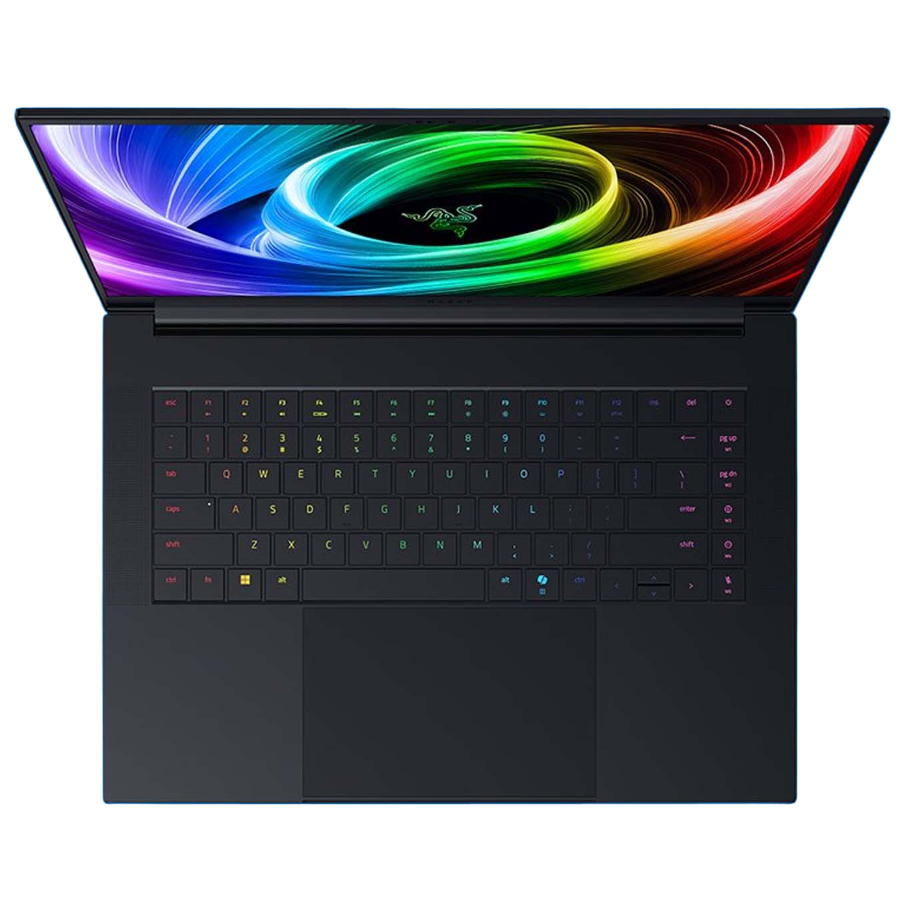
1. Best overall:
Razer Blade 16 (2025)
2. Best budget:
Lenovo LOQ 15 Gen 10
3. Best 14-inch:
Razer Blade 14 (2025)
4. Best mid-range:
MSI Vector 16 HX AI
5. Best high-performance:
Lenovo Legion Pro 7i Gen 10
6. Best 17-inch:
Gigabyte Aorus 17X
Beautiful design, top-tier internal hardware (albeit with an aging CPU), but with a particularly low TGP on the RTX 5060, it absolutely hammers the frame-rates down to the point you end up questioning whether it's a 5050 in disguise.
After graduating from the University of Derby in 2014, Zak joined the PC Format and Maximum PC team as its resident staff writer. Specializing in PC building, and all forms of hardware and componentry, he soon worked his way up to editor-in-chief, leading the publication through the covid dark times. Since then, he’s dabbled in PR, working for Corsair for a while as its UK PR specialist, before returning to the fold as a tech journalist once again.
He now operates as a freelance tech editor, writing for all manner of publications, including PC Gamer, Maximum PC, Techradar, Gamesradar, PCGamesN, and Trusted Reviews as well. If there’s something happening in the tech industry it’s highly likely Zak has a strong opinion on it.
You must confirm your public display name before commenting
Please logout and then login again, you will then be prompted to enter your display name.


